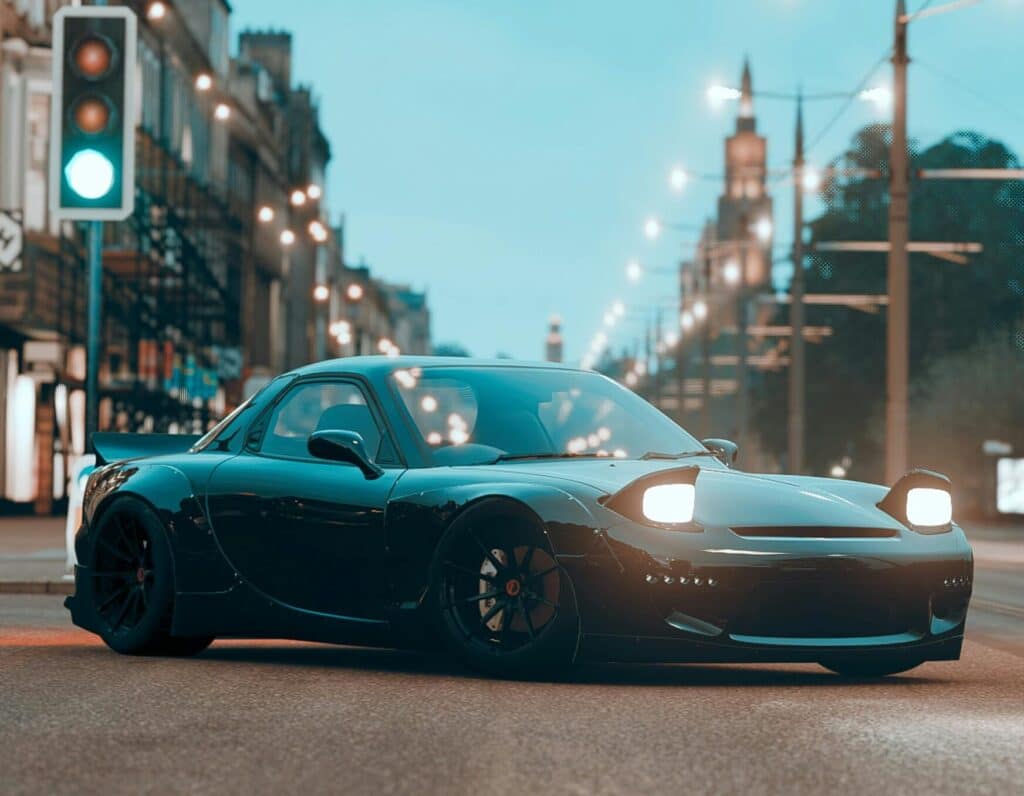
Table of contents
Introduction
If there is one thing for certain in the car world, its that enthusiasts love JDM sports cars. JDM, or Japanese Domestic Market, refers to the vehicles available in Japan. While traditionally it refers to cars specific to Japan, the term JDM is often used by enthusiasts to refer to any Japanese made car. When I first got into cars, I learned that my Acura CL was actually a Honda. I was exposed to the JDM market by my friends who love rotary powered cars. Growing up around American cars, I had little to no knowledge of Japanese cars other than I owned one. Thankfully, my friends showed me the way and I learned about things like what JDM sports cars we missed out on here in the states.
Today, we will celebrate these JDM sports cars and their iconic designs, stellar performance, and what makes them so beloved.
JDM Sports Car Legends
Honda Civic

Released in 1972, the Honda Civic was brought into the world as a subcompact car. Through the 1970’s, the Honda Civic was a huge hit. This was the car that gave Honda a foothold in the automotive market. To me, I will always know the Civic as a tuner car built to dominate in racing and on the street. The Civis of the 1990’s are my favorite as they have a huge aftermarket. When you see Civics at a car meet, these are the ones you will see. Whether its a stance build or a sleeper K swap build, the Civic can really do it all. In the modern market, the Civic disrupts the JDM sports car world with the Civic Type R.
PowerShift Auto Fun Fact: I learned how to drive stick shift on a Honda Civic. Therefore, I will always love the Civic.
Honda/Acura Integra

Honda’s success with the Civic was piggybacked by the release of the Integra. Built on the Civic Chassis, the Integra was aimed to be a more luxurious and sportier car. Through the 1990’s, the Integra reigned as a great tuner car. To this day, the 1995-2001 Integra is revered as one of the best front-wheel drive cars ever made. when Honda switched the Integra to the RSX nameplate, the cult-like following continued. When I first got into cars, all I saw were Integras/RSXs. I saw them so much that I wanted to buy one! Fast forward to today, the Integra has been reborn as a liftback four door based on the Civic chassis. While it has mixed reviews, the current generation Integra makes an unforgettable impact with the Type S model!
Honda NSX

No Honda fanboy can go without talking about the Honda NSX. Crafted with the assistance of legendary race car driver Ayrton Senna, the NSX exudes balance. The Honda NSX uses a mid-engine layout with either the C30 or C32 V6. With its lightweight and aerodynamic body, this makes the NSX in all-around amazing JDM sports car. While its power numbers are not high by today’s standards, the driving experience created from Honda’s engineers overshadows this. The current model NSX is often pushed off by its older generations, but I love the modern machine. The third generation NSX was a hit when it was first teased in the Avengers movie. Today, it is a supercar that has not only an amazing driving experience, but is usable in a day-to-day driving capacity. Regardless of others opinions of the newest model, the legacy of the NSX still lives on.
Honda S2000

One of the most sought after roadsters ever made is the Honda S2000. The heart of this beautiful machine is either the F20 or the F22 four cylinder engine. With 240 horsepower, and an 8800-9000 redline (depending on the year), the Honda S2000 is a beast of a car. At one point in time, it had the best horsepower to liter ratio. Not bad for a naturally aspirated 4 cylinder. The rear wheel drive VTEC-powered sports car from Honda has a true winning pedigree. Not only is it successful in motorsports, but the tuning scene adores these cars. You can find these JDM sports cars at any track day or car meet attracting tons of attention! Because of the S2000’s success, Honda lovers everywhere yearn for the day a new S2000 hits the market.
Lexus IS300/Toyota Altezza
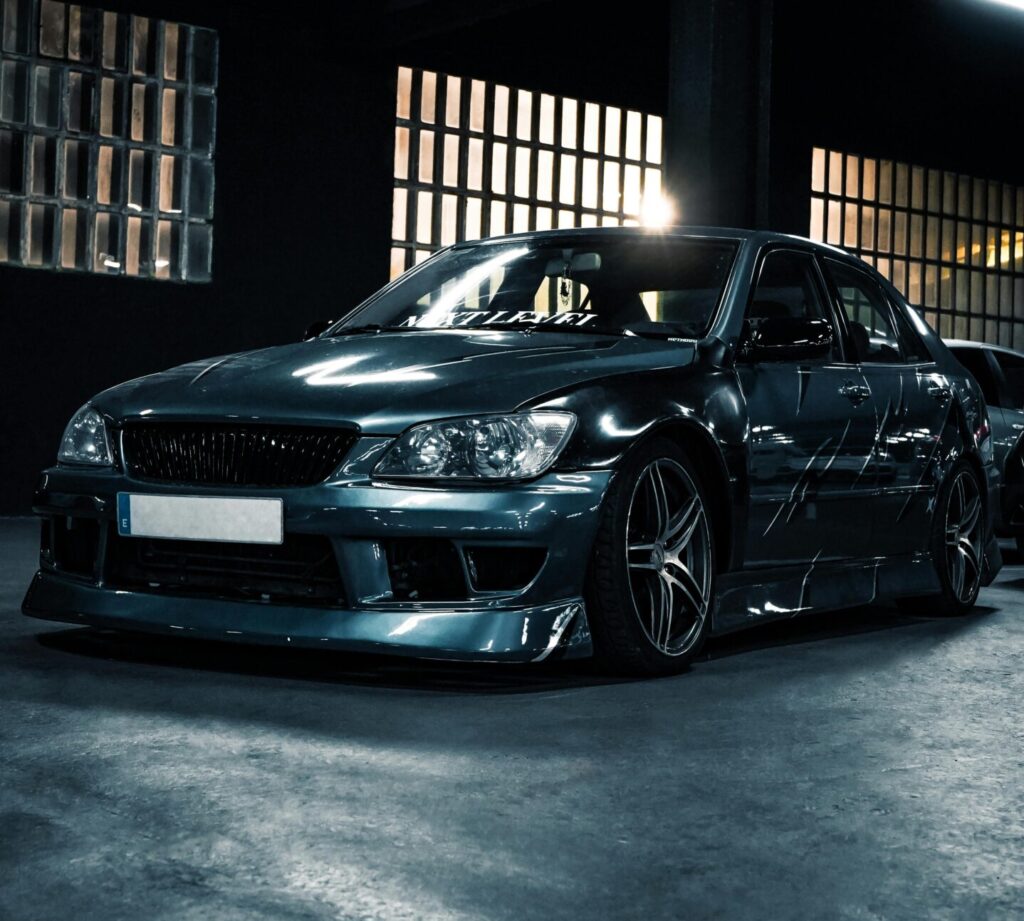
You ever want a 2JZ but couldn’t afford a Supra? Lexus has the answer for you: The IS300. A 4 door sports sedan with a manual transmission, beautiful exhaust note, and rear wheel drive is a recipe for success. The Lexus IS300, AKA the Toyota Altezza, has a phenomenal chassis for the track or the street. Coming in around 3200 pounds, the IS300 is perfect for a handling oriented build. Many people modify these cars to the wildest degree because the aftermarket allows it. While it is rare to find a manual transmission option, there are plenty of granny-driven IS300s out there for you to build a pure JDM sports car!
Mazda RX-7
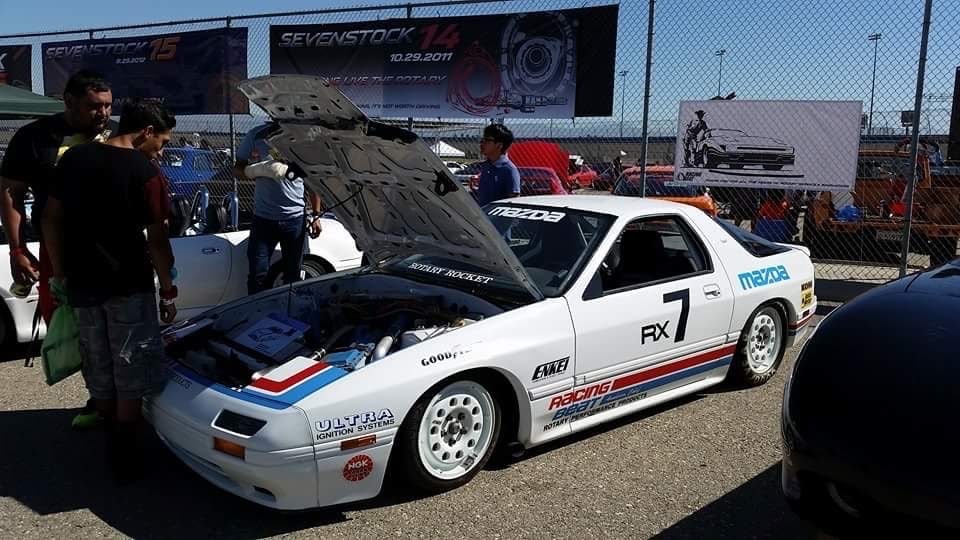
From day 1 of the RX-7, Mazda developed a cult following. The FB RX-7 started the legend as a lightweight two-door JDM sports car that loves to rev. Due to its powerband, lightweight design, and high performing chassis, the FB RX-7 established its credibility as a force to be reckoned with.
When the RX-7 FC came out, this reputation only grew. The aerodynamic design and excellent handling made the FC continue the winning racing heritage. Mazda turned up the power on the RX-7 with the introduction of the Turbo II FC. 200 horsepower from a turbocharged rotary in a 2700lb car is an absolute riot. The turbocharger played well with the power delivery of the rotary engine, bringing widespread success in the car market and on the track.
As time went on, The FD RX-7 was released and brought forth a totally different beast. The 13B-REW engine came in with sequential twin turbochargers. The 1992 FD produced 252 horsepower, which then grew to 276 by the end of its production in 2002.
The impact of this JDM sports car is all over the tuning world and mass media. You may recognize the RX-7 from its appearances in Initial D, The Fast and the Furious franchise, or Wangan Midnight. Its reputation in the car world has made it a cultural icon and a popular dream car for enthusiasts. While its been years since Mazda produced a rotary engine car, the fanbase still remains.
Mazda MX-5 Miata

When building a sports car, the answer is always the Mazda MX-5 Miata. From its creation, Mazda has ensured its featherweight rear-wheel drive roadster provides the best driving experience it can.
MX-5 NA
The NA Miata came about in 1989 and weighed an incredible 2200 pounds! While power was not its strong suit, the go-kart like driving experience was instantly loved. This generation of Miata in particular is a common base for track cars. Many Miatas do not have power steering or power brakes, which keeps the weight drastically down. With some suspension, brake, and bracing work, the NA Miata is a capable racecar for anyone!
MX-5 NB
Mazda’s NB generation maintained a lightweight profile and took design cues from the FD to spice it up for the market! While we dislike the removal of the pop-up headlights, the car still maintained its fun demeanor. In 2004, Mazda introduced the Mazdaspeed Miata. Adding a turbocharger, updating the suspension, and tuning made this nimble sports car capable of dominating many cars.
MX-5 NC
While the NC generation of Miata is typically overlooked due to its increase in size and questionable styling, I still admire Mazda’s dedication to the car. Despite its larger size, its 2500lb curb weight is still a featherweight compared to the era’s average curb weight of 3600 pounds. This generation of Miata had special editions galore. Most notably, the club edition Miata came in with an Limited-slip differential, Bilstein suspension, aero pieces for the front and rear, and 17″ alloy wheels. The combination of the parts made it very popular for someone wanting a sports car feel that can handle day-to-day road conditions.
MX-5 ND
Today, Mazda has its ND series MX-5 keeping the affordable JDM sports car market alive. My favorite part about the ND is the RF model with its retractable hard top. With an approximate 2700 pound curb weight, it is the heaviest model available. However, Mazda compensates for this with an entry horsepower rating of around 180. Not only does it have a strong powerplant, but the aftermarket loves the ND. For example, you can get either a turbocharger or supercharger kit from Flyin’ Miata that is designed specifically for the ND. Not only is it engineered well to fit perfectly, it is emissions legal, including in California!
Overall, the Miata is a special car that lets car enthusiasts know that it is not always about power. More importantly, it is the driving experience that matters for this JDM sports car.
Mitsubishi Lancer Evolution
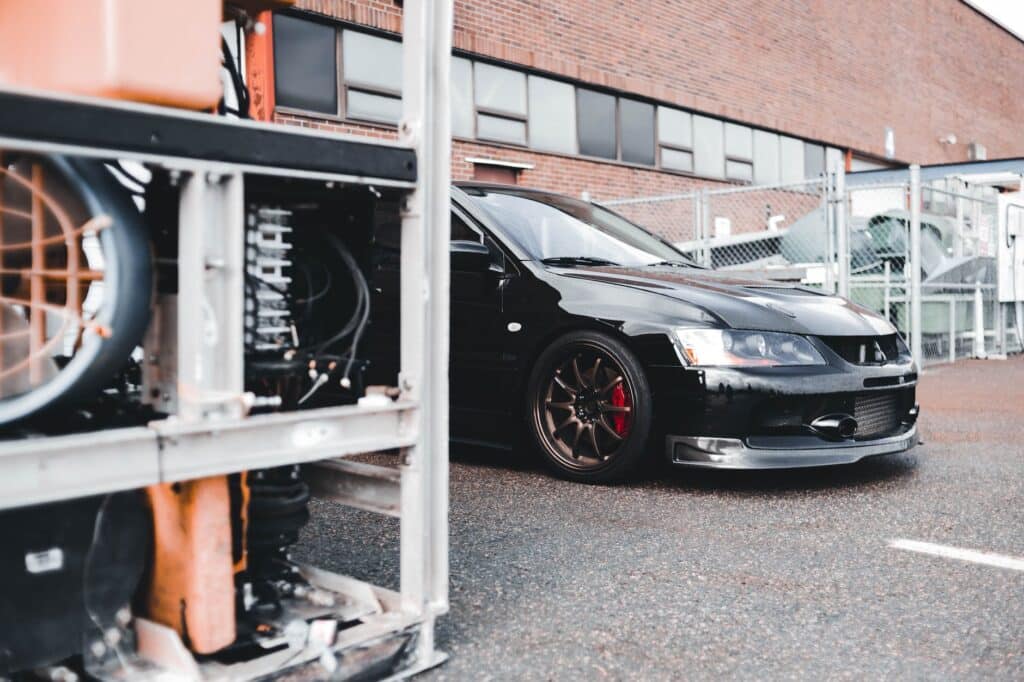
The Rally legend itself: The Mitsubishi Lancer Evolution. With a turbocharged 4G63 engine, manual transmission, and Mitsubishi’s legendary all-wheel drive system, the Lancer Evo left its mark as a remarkable JDM sports car. For ten model generations, the Evo provided an insane driving experience for its owner and took the aftermarket tuning world by storm. The 4G63 engine’s reputation for taking on big boost turbo builds and making crazy power is documented in both the drag racing and street racing scenes. In the world of Rally racing, the Evo is synonymous with victory, with its main rival being Subaru’s STi.
Mitsubishi’s Lancer Evo is more than a sports car. It is a reminder of what types of cars we are capable of building. While the Evo is now a memory to car enthusiasts, its impact is still shown today. Nowadays, if you show up to a meet with an Evo, you are instantly the cool kid. There aren’t many Evos left, but the ones that are are legends in their own way.
Nissan S-Chassis (180SX/240SX/Silvia)
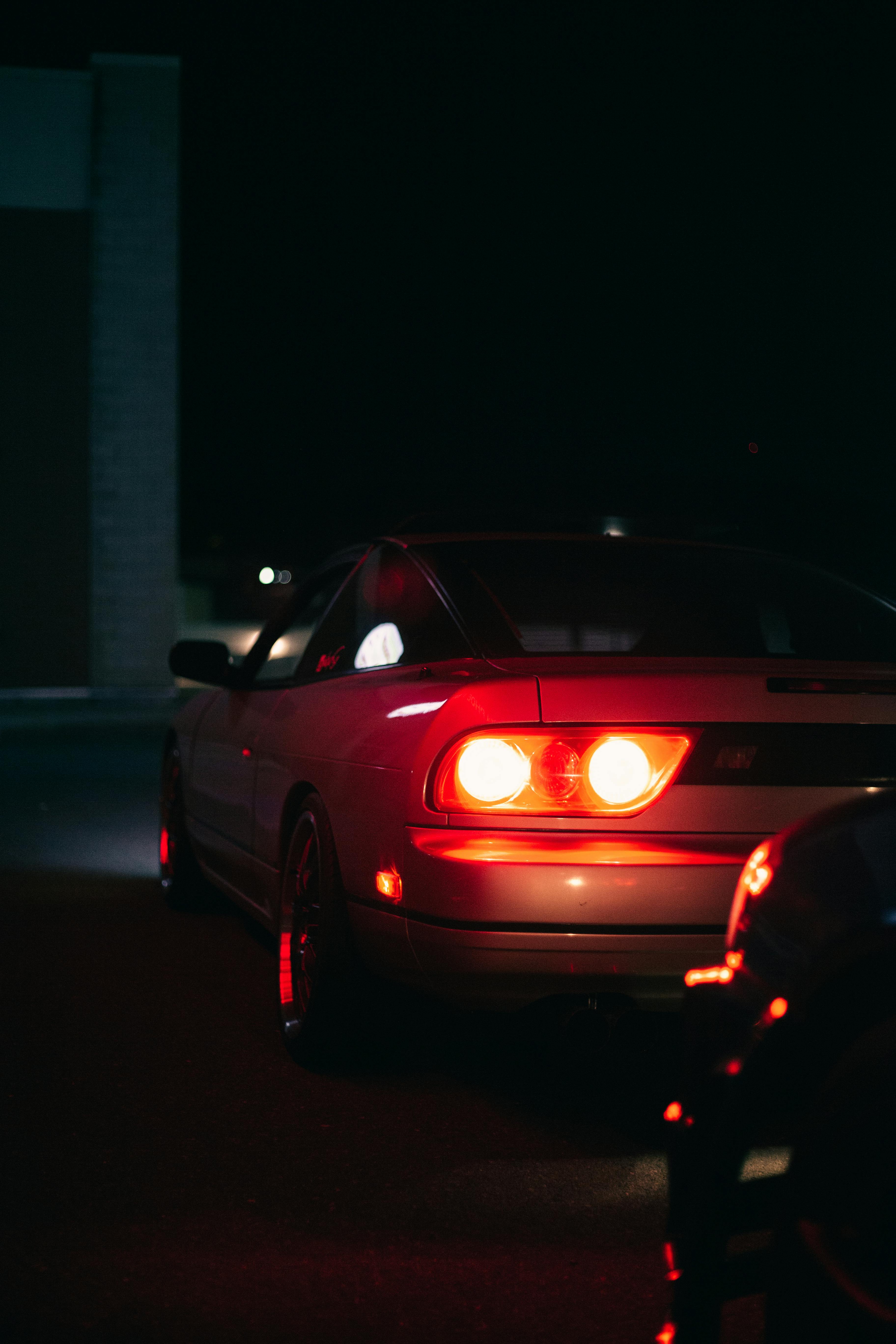
It is impossible to talk about JDM sports cars without covering Nissan’s S-Chassis. The 180sx/240sx is the go-to car for drift cars and mountain racing builds. Unfortunately, North America has to deal with the only available engine, the KA series. In Japan, the S-Chassis has access to both the CA18DET and SR20DET turbocharged engines. With a five speed manual transmission and rear wheel drive, the S-Chassis is perfect for those needing a sports car.
This car became known for drift racing as it provided good balance to the drivers and has a lightweight 2700lb body. The platform is fairly easy to control and provides a smoother entry into drifting. With its history in the aftermarket tuning and racing worlds, it is no surprise these cars are searched for far and wide by enthusiasts.
Nissan Z
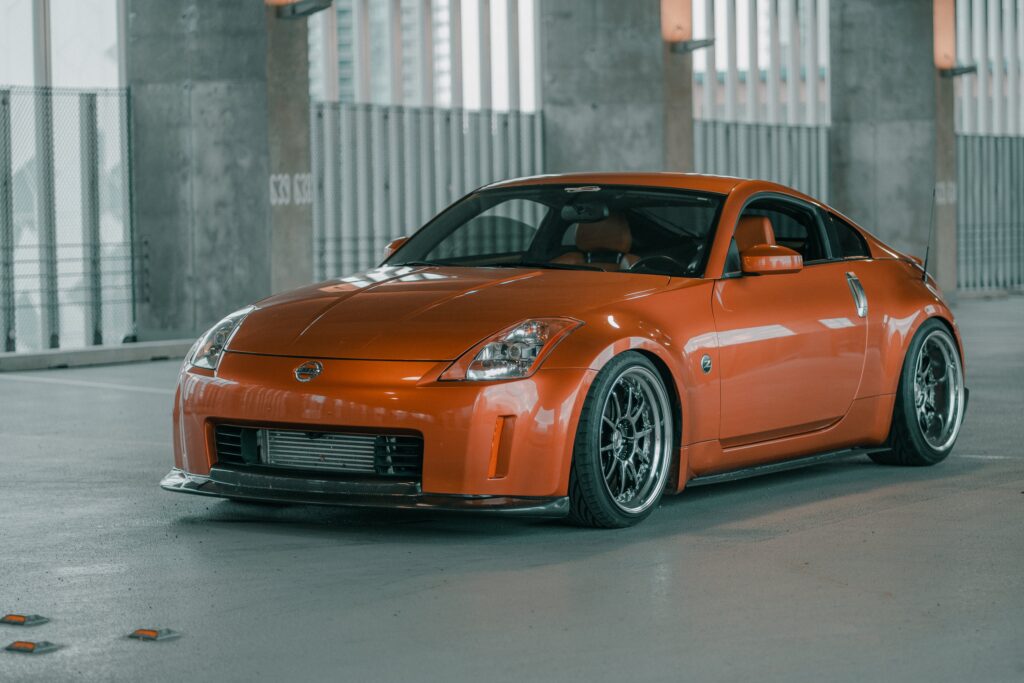
The Nissan Z-Car, or Fairlady Z, started its journey as the Datsun 240Z in the 1970s. The two door, lightweight sports car has a timeless design with performance to back it. During the days of carbureted V8 engines, the 240Z was seen beating Trans Ams, Camaros, and others due to its power-to-weight ratio. As time went on, the Z-Car upgraded with forced induction in the form of turbochargers. When the Datsun name went away, Nissan transitioned to the 300ZX model. This version of the Z is most known for its twin turbocharged V6 in the Z32 chassis. The 300 horsepower generated made this car receive the nickname of “Japan’s Corvette Killer”.
Fast forward to the early 2000s, the development and release of the 350Z and 370Z took over. These cars quickly established their place in the JDM sports car market with the high performing VQ35 and VQ37 engines. Combined with a limited-slip differential and manual transmission, the 2000s Z cars were dominating the competition. As of today, Nissan revitalized the Z with the new 400Z. Taking on styling cues from the 1970s Z cars, the 400Z looks like a modern 240Z. Utilizing a twin turbocharged six cylinder engine gives it an awesome 400 horsepower and 350 lb. ft of torque. Despite dealer markups with this car, the 400Z has started popping up everywhere and is making its way through the aftermarket automotive scene.
Nissan Skyline GT-R
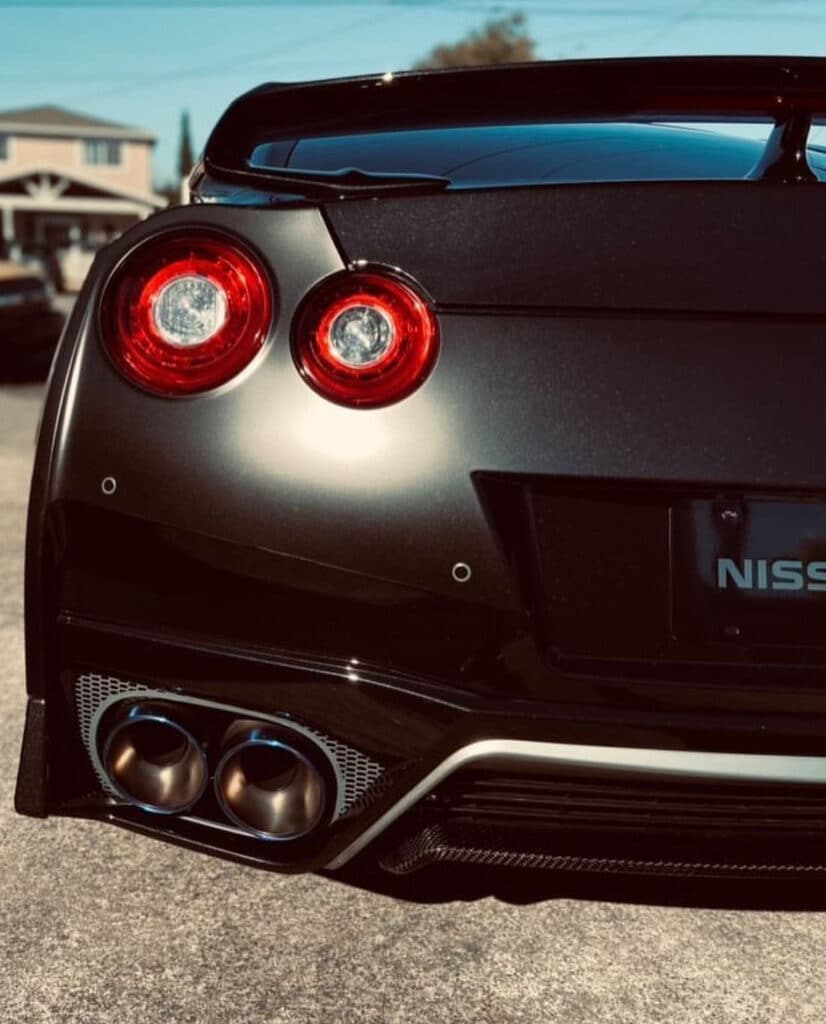
Nissan’s GT-R is one of the most recognizable JDM sports cars ever created. Not only was it known for dominating the race tracks, but it took over the tuner scene throughout the 90s and 2000s. Today, the R35 GT-R is used as a platform for insane builds. Due to the tuning scene around the R35, it is not uncommon to see 1000+ horsepower builds.
What makes the GT-R so popular? Nissan has the RB series motors to thank for its success. The RB series motors established a reputation for reliability and durability. While the R35 GT-R sports the VR38DETT engine, the R34 and earlier models have the famed RB26. During the time of the R32 to R34 Skyline GT-Rs, Japan had the famed “Gentleman’s Agreement” to not create cars with more than 276 bhp. However, it is also a well known fact that these manufacturers lied. Nissan had installed a boost restrictor, which only allowed for 10 psi of boost. If you know where to look, you can take the restrictor out and increase that psi to 14. This creates a 60 horsepower gain for your car. Pretty cool considering around 340 horsepower was a lot in the 90s!
Regardless of the generation of GT-R, it will always be a beloved JDM sports car for any enthusiast.
Subaru Impreza WRX STi
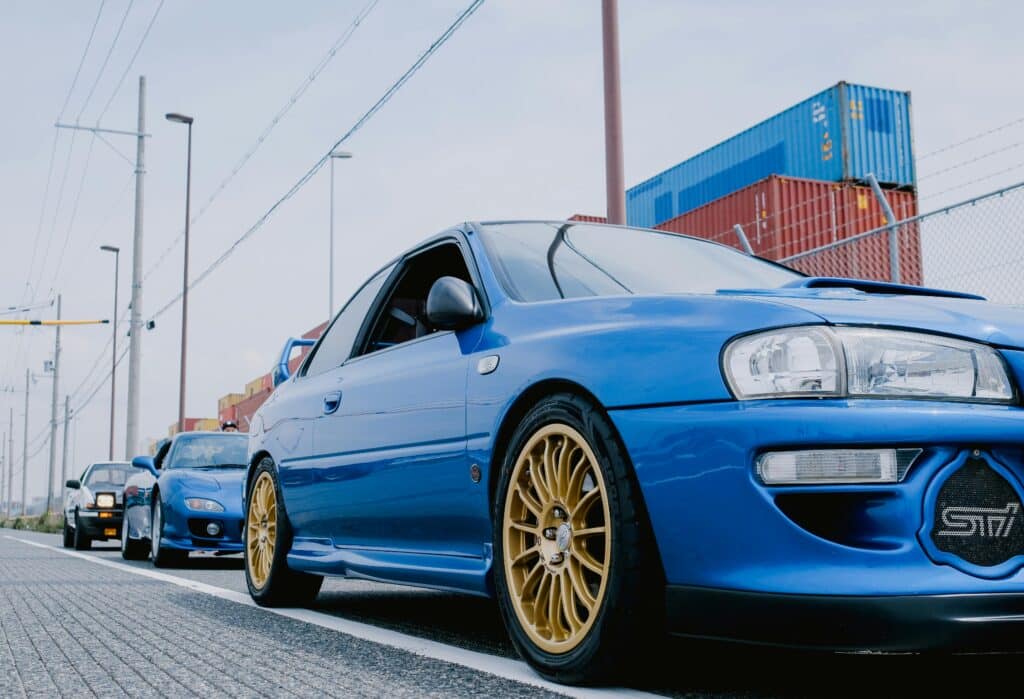
Subaru’s WRX Sti is a cultural icon for car enthusiasts. While some associate this car with IT employees and vape kids, I associate the STi with rally car domination. My first experience with the STi came from watching rally races on TV. Not only were the drivers absolutely nuts, but the Subaru was more than capable to handle the abuse. The turbocharged boxer motor and its iconic “rumble” is such an awesome sound. From the GC8 STi to the modern iterations, the car is adored by enthusiasts and for good reason.
Subaru’s all-wheel drive system, in my opinion, is unmatched. Traction is constantly there and the power delivery is near perfect. While the engines may not be able to take on much power, I don’t think they have to. The power rating of around 300 horsepower is plenty for a car this size. What I love about the WRX STi is the aftermarket availability for it. If you want to change something on this car, there are parts available for it. Altogether, the all-wheel drive packaged with 300 horsepower is an absolute recipe for success.
Toyota MR2

If you want a two-door, mid engine, rear wheel drive sports car for not a lot of money, the MR2 is the perfect option for you. Back in 1984, Toyota brought us the AW10 chassis MR2 as a fun sports car for the masses. Now these MR2s are featherweights in today’s market. The AW10 curb weight ranges from 2282 to 2500 pounds. The heart of the AW10 varies from a 1.5 liter four cylinder, a 1.6 liter four cylinder, or the 1.6 liter four cylinder with a supercharger.You can find these in today’s market for a few thousand bucks. Get them while you can though, because something tells me the AW10 will go up in price soon.
Now, the MR2 everyone thinks of is the “Baby Ferrari” SW20 model. The SW20 has sleek body lines and is recognizable amongst the masses. What gets people really excited about the SW20 is the addition of a turbocharger. While the curb weight is heavier (around 2800 pounds), the 200 horsepower engine more than makes up for it.
Last but certainly not least is the MRS, otherwise known as the MR2 Spyder. While it’s looks are controversial, it does have some things going for it. The 1ZZ 1.8 liter engine produces around 140 horsepower and pushes the 2200 pound body to 60 miles per hour in 8.7 seconds. The MR-S may not have the power, but it’s lightweight platform has been used as a canvas for motorsports for decades.
Toyota Celica
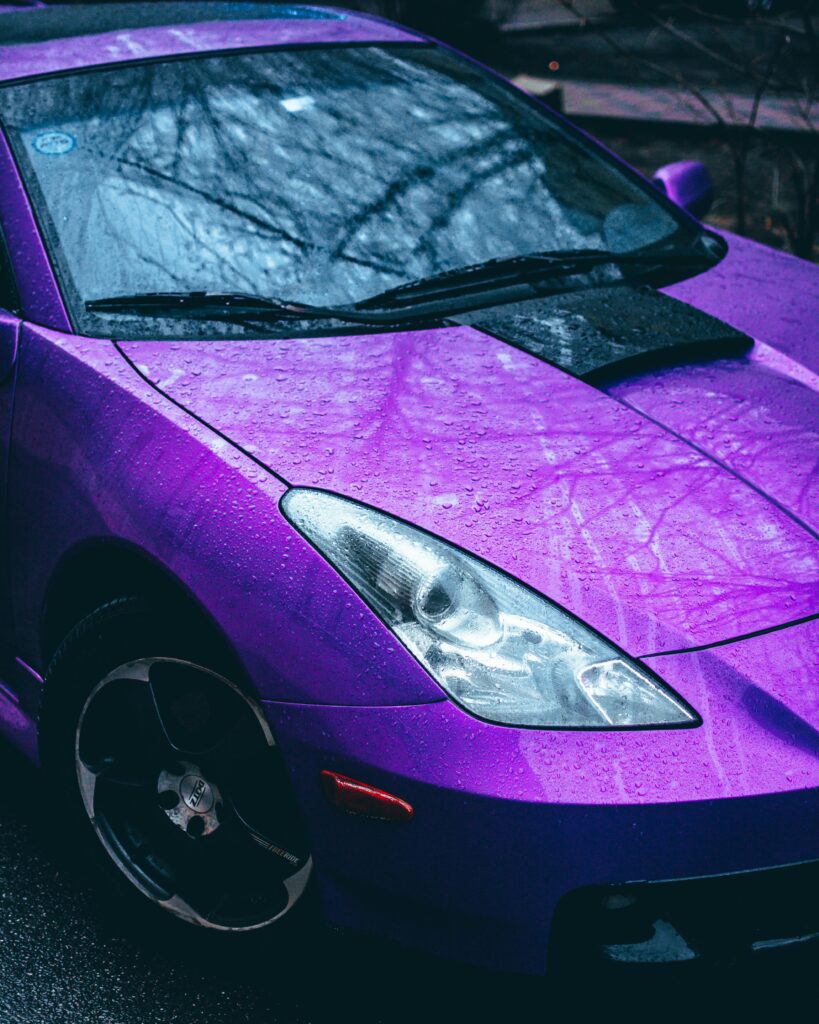
Toyota’s Celica sports car has gone through many iterations over its 7 generations. The Celica started off as a lightweight 2-door rear wheel drive sports car and concluded its life as a front-wheel drive hatchback. Regardless, every generation is loved by car enthusiasts. One of the Celica’s greatest achievements was its dominance in rally racing. The all-wheel drive turbocharged GT-4 one our hearts and minds in the unpaved rally races of the 90’s. Fast forward to today, Toyota celebrates that dominance with a GR86 built with Celica-inspired livery. Fortunately, the hype of the Celica is booming as rumors of the Celicas return are filling automotive news sources everywhere.
Toyota Supra

Toyota’s Supra sports car is iconic in itself. The Supra is associated with great turbocharged performance with beautiful styling. Starting off as the “Celica Supra”, Toyota took on the sports car market with a 2.6 liter inline six engine. Later in development, the Supra separated from the Celica line up and became Toyota’s premier GT car. The MK3 Supra adopted the first turbocharged engine for the platform and propelled it towards its “super car” like notoriety. With the MK4 model, the turbocharged beast became a car culture icon.
The MK4 is really where the Supra’s fame began, taking on cars that cost “more than you can afford”. Nowadays, the MK4 Supra is seen commonly beating cars on the streets of Mexico as well as the track. When the MK5 Supra came out, I’m not going to lie, I was disappointed at first. To some, it is a rebadged and rebodied BMW Z4. However, having driven the car myself, it drives very nice and has good power. While it may not be the current favorite, I definitely foresee the MK5 being a future classic.
What Do We Love About JDM Sports Cars?
JDM sports cars, much like the muscle cars of the 60s and 70s, represent a time of true competition between manufacturers. The cars were great because each company had to beat the other. There was no room for a lackluster car. Even the normal JDM cars at the time were amazing. The uniqueness of each car, the attention to detail, and the performance these cars offered were something special.
I grew up around muscle cars, but my first car was Japanese. Because my friends were all into Japanese cars, I got to learn about them and drive them all the time. Fortunately, this gave me appreciation for the different things manufacturers did to give their cars an edge against the competition. While I will always be a classic American car lover first, I will always have a soft spot for these iconic JDM sports cars.
Powershift Auto’s Favorite JDM Sports Cars
First and foremost, I am a Honda fanboy. Too many people bash the front-wheel drive Hondas. If you get behind the wheel of an Integra, Civic Si, or an Acura CL Type-S, you will see why Honda has a strong following. Secondly, I love the Z car. From the 240Z to the Z31 and Z32 300ZX, I love them immensely. Admittedly, I’m not the biggest 350z fan but that’s mostly because I don’t care for the VQ noises. You can’t deny the performance though. However, if I could only buy one JDM sports car to own for the rest of my life, I do believe it’d be a Hakosuka GT-R. That is one of the most beautiful cars ever to come out of Japan.
Conclusion
The history of success with Japanese cars is amazing to learn about. Dedication to their craft and the desire to make the best car possible has led to the creation of near-perfect cars. JDM sport car performance and their gorgeous styling have led to a huge increase in demand over the years. Many car enthusiasts look upon these cars as the last great sports cars available. While this is showing in increase in used car prices, some of these models are still attainable to the average Joe. Fortunately, import laws for cars are leaning in our favor. If I was a betting man, I’d bet you’ll be seeing many right hand drive JDM imports in the coming future! Until then, enjoy these cars when you see them, because each one is extremely special.
Want to have your vehicle featured on our website? Contact us on our website, Pinterest, or Instagram!

Keep up with the latest articles, content, and special offerings by signing up for our email newsletter!
